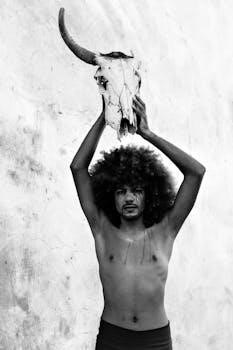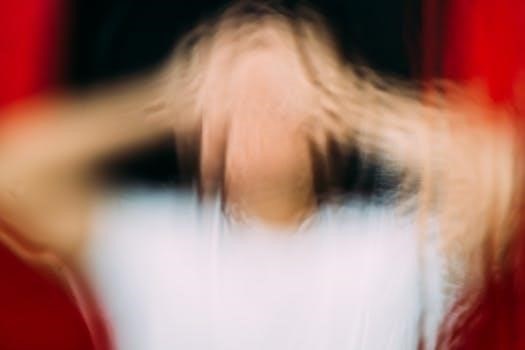Art and Fear⁚ A Guide for Artists
Art and Fear by David Bayles explores the difficulties artists encounter. It examines why art may not materialize and helps artists endure in the creative world. It provides insights into overcoming obstacles and embracing artistic journeys.

Art & Fear, penned by David Bayles and Ted Orland, stands as a guiding light for artists navigating the turbulent waters of creativity. It’s not a technical manual, but a compassionate companion that delves into the psychological and emotional landscape of artmaking. The book fearlessly confronts the pervasive anxieties and self-doubts that plague artists, offering solace and practical wisdom to those who often feel isolated in their struggles.

This book explores the reasons why artists abandon their creative pursuits. It emphasizes perseverance and self-discovery, encouraging artists to embrace their unique voices. Bayles and Orland offer guidance on handling feedback and criticism. They delve into the value of the creative process itself, celebrating the journey as much as the destination. It is a resource for both aspiring and established artists seeking to overcome internal obstacles and cultivate a fulfilling artistic life. Art & Fear is a survival guide for the artist, offering insights into the creative process and the challenges that come with it.
The Nature of Artistic Fear and Doubt
Artistic fear and doubt, as explored in Art & Fear, are not external enemies but intrinsic aspects of the creative process. These emotions often manifest as a fear of failure, a sense of inadequacy, or a paralyzing perfectionism. The book emphasizes that such feelings are universal among artists, regardless of skill or experience. They stem from the vulnerability inherent in exposing one’s inner self through creative work.
The authors highlight that these fears are often rooted in unrealistic expectations and a skewed perception of artistic success. Artists may compare themselves to idealized versions of others or strive for unattainable levels of perfection, leading to self-criticism and discouragement. Art & Fear encourages artists to recognize these patterns of thought and to challenge their validity. It emphasizes the importance of self-compassion and acceptance in navigating the emotional challenges of artmaking.

By acknowledging and understanding the nature of artistic fear and doubt, artists can begin to disarm their power and move forward with greater confidence and resilience. The book serves as a reminder that these emotions are not signs of weakness but rather indicators of a deep engagement with the creative process.
Common Obstacles Faced by Artists
Artists encounter numerous obstacles, both internal and external, that can hinder their creative progress. One significant challenge is self-doubt, which often manifests as a fear of judgment or a belief in one’s own inadequacy. This can lead to procrastination, avoidance of creative tasks, or a stifling of experimentation. Perfectionism is another common hurdle, driving artists to endlessly refine their work, preventing them from ever feeling satisfied or complete.
External obstacles include a lack of resources, such as time, money, or studio space, which can make it difficult to pursue artistic endeavors. Criticism, whether from peers, critics, or even oneself, can also be a major deterrent, especially when it is perceived as harsh or unfair. The pressure to conform to societal expectations or market trends can stifle artistic expression, leading artists to compromise their vision.
Additionally, artists may struggle with finding their unique voice or style, feeling lost in a sea of influences. Overcoming these common obstacles requires resilience, self-awareness, and a willingness to embrace failure as a learning opportunity.
The Importance of Perseverance in Artmaking
Perseverance is paramount in artmaking, acting as the bedrock upon which artistic growth and achievement are built. The path of an artist is rarely smooth; it is often fraught with challenges, setbacks, and moments of self-doubt. It is in these moments that perseverance becomes crucial, enabling artists to navigate obstacles and continue pursuing their creative vision.
Without perseverance, the inevitable rejections, criticisms, and creative blocks can easily lead to discouragement and abandonment of artistic pursuits. Perseverance allows artists to learn from their mistakes, adapt to changing circumstances, and refine their skills over time. It fosters resilience, enabling artists to bounce back from failures and maintain a positive attitude despite adversity.
Moreover, perseverance cultivates a deeper understanding of the creative process itself. By consistently engaging in artmaking, artists gain insights into their own strengths and weaknesses, develop their unique style, and discover new avenues for exploration. It is through persistent effort that artists ultimately realize their full potential and create work that resonates with authenticity and meaning. Therefore, perseverance is not merely a desirable trait for artists; it is an indispensable ingredient for success.
Overcoming Perfectionism
Perfectionism, a common pitfall for artists, can stifle creativity and hinder progress. The relentless pursuit of flawless work often leads to paralysis, preventing artists from starting or completing projects. Overcoming perfectionism requires a shift in mindset, embracing the imperfections inherent in the creative process.
One effective strategy is to focus on the process rather than the outcome. By immersing oneself in the act of creating, artists can detach from the pressure of achieving perfection and allow themselves to experiment freely. Embracing experimentation and accepting mistakes as learning opportunities is crucial for growth.
Another approach is to set realistic goals and break down large projects into smaller, manageable steps. This prevents overwhelm and allows for a sense of accomplishment along the way. Additionally, practicing self-compassion and challenging negative self-talk can help artists cultivate a more positive and supportive inner dialogue.
Ultimately, overcoming perfectionism involves recognizing that imperfection is not a flaw but rather an integral part of the artistic journey. By embracing imperfection, artists can unlock their creative potential and create work that is authentic, meaningful, and truly their own. It allows for growth, exploration, and the freedom to express oneself without the constraints of unattainable ideals.
The Role of Feedback and Criticism
Feedback and criticism play a vital role in the development of any artist. While it can be daunting to expose one’s work to scrutiny, constructive feedback offers invaluable insights and opportunities for growth. The ability to discern useful criticism from unhelpful noise is a crucial skill for artists to cultivate.
Seeking feedback from trusted sources, such as fellow artists, mentors, or instructors, can provide diverse perspectives and identify areas for improvement. It’s essential to approach feedback with an open mind, recognizing that others may see aspects of your work that you, as the creator, might overlook.
However, not all criticism is created equal. Learning to differentiate between constructive and destructive feedback is paramount. Constructive criticism focuses on specific elements of the work, offering suggestions for improvement, while destructive criticism is often personal, vague, and unhelpful.

It’s also crucial to remember that art is subjective, and not everyone will appreciate or understand your work. Develop a thick skin and learn to disregard criticism that is solely based on personal preference or lacks substance. Ultimately, the artist must decide which feedback to incorporate and which to disregard, staying true to their artistic vision while remaining open to growth and learning.
Finding Your Own Artistic Voice
Finding your own artistic voice is a journey of self-discovery, experimentation, and refinement. It’s about uncovering what makes your art unique, authentic, and truly yours. This process involves exploring different styles, techniques, and subject matter, while also delving into your personal experiences, values, and perspectives.
One of the key steps in finding your artistic voice is to embrace experimentation. Don’t be afraid to try new things, push boundaries, and step outside of your comfort zone. Explore different mediums, techniques, and styles, and see what resonates with you.
Another important aspect of this journey is to draw inspiration from your own life experiences. Your personal history, values, and beliefs can all inform your art and give it a unique perspective. Don’t be afraid to share your story through your work, and let your voice be heard.
It’s also essential to develop a critical eye and learn to evaluate your own work. Ask yourself what you like about your art, what you don’t like, and what you can do to improve. Seek feedback from trusted sources, but ultimately, trust your own instincts and stay true to your vision.
Finding your artistic voice is an ongoing process. It takes time, effort, and dedication to develop a style that is truly your own. But with perseverance and a willingness to explore, you can discover your unique artistic voice and create art that is both meaningful and impactful.
The Value of the Creative Process
The creative process is not merely a means to an end, but a valuable experience in itself. It is during this process that artists explore, experiment, and discover new possibilities. The value lies not only in the final product but also in the journey of creation.
The creative process allows artists to tap into their inner selves, express their emotions, and explore their thoughts and ideas. It is a form of self-discovery, where artists learn more about themselves and their capabilities. This process can be therapeutic, providing an outlet for stress, anxiety, and other emotions.
Moreover, the creative process fosters innovation and problem-solving skills. Artists often encounter challenges and obstacles during their creative endeavors, which require them to think outside the box and find creative solutions. These skills can be applied to other areas of life, making the creative process a valuable asset.
The creative process also promotes mindfulness and focus. When artists are fully engaged in their work, they become present in the moment, losing themselves in the act of creation. This can be a meditative experience, allowing artists to escape from their worries and connect with their inner selves.
Finally, the creative process is a source of joy and fulfillment. Creating something new, whether it’s a painting, a sculpture, or a piece of writing, can bring a sense of accomplishment and pride. This feeling of satisfaction can boost self-esteem and motivation, encouraging artists to continue exploring their creativity.
The artistic journey, as explored through resources like “Art & Fear,” is a path filled with both challenges and rewards. It is a journey that demands courage, resilience, and a willingness to confront one’s fears and doubts. To truly embrace this journey, artists must understand that the obstacles they face are not unique to them but are common experiences shared by creatives throughout history.
Embracing the artistic journey means accepting that failure is an inevitable part of the process. It is through these failures that artists learn, grow, and refine their skills. It also means letting go of perfectionism and focusing on the process of creation rather than the pursuit of an unattainable ideal.
Furthermore, embracing the artistic journey involves finding one’s own voice and expressing it authentically. It requires a willingness to experiment, to take risks, and to challenge conventional norms. It means being true to oneself and creating art that reflects one’s unique perspective and experiences.
Finally, embracing the artistic journey means finding joy and fulfillment in the act of creation. It is about appreciating the process, celebrating the small victories, and recognizing the value of the artistic journey itself. By embracing the artistic journey, artists can overcome their fears, unleash their creativity, and create meaningful work that enriches their lives and the lives of others.
